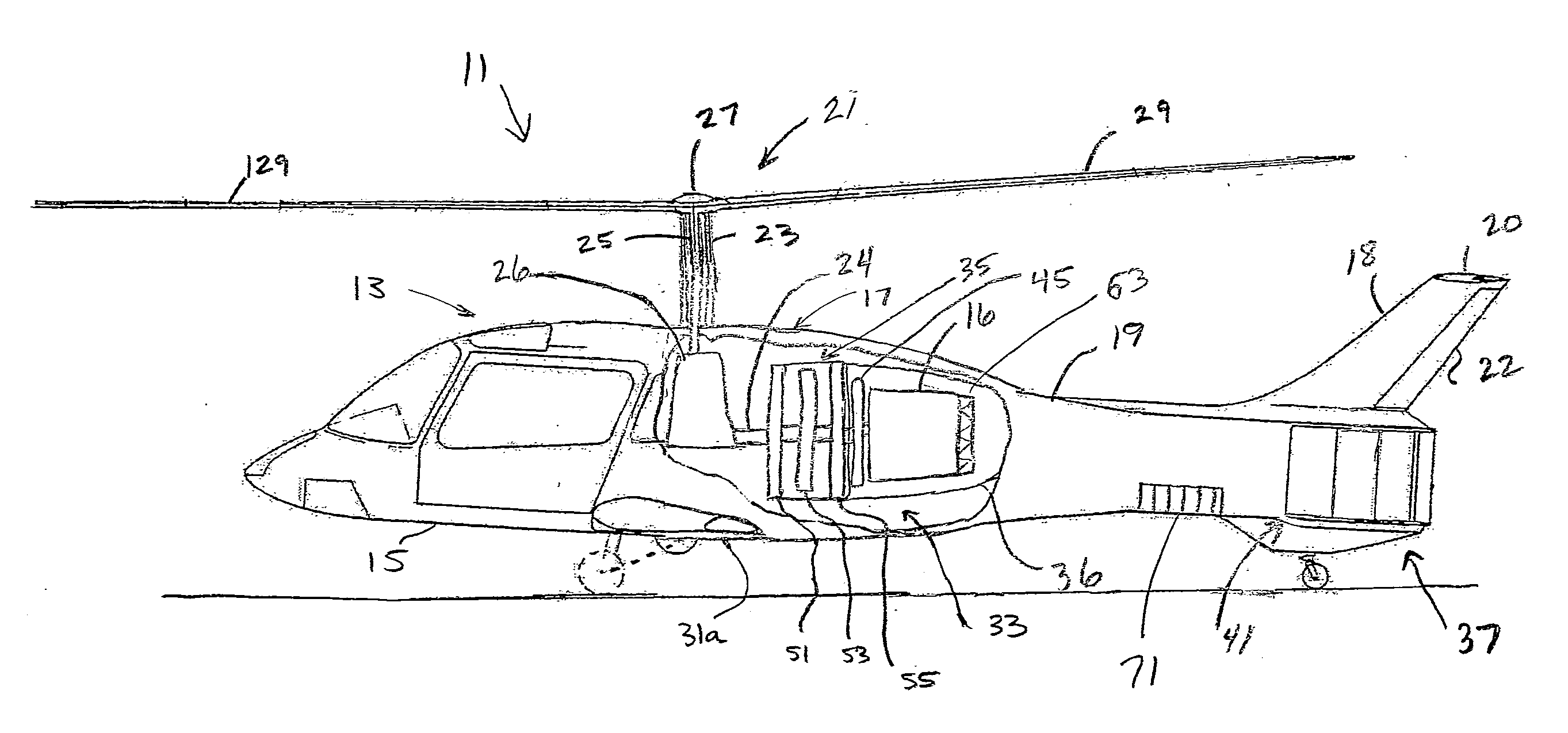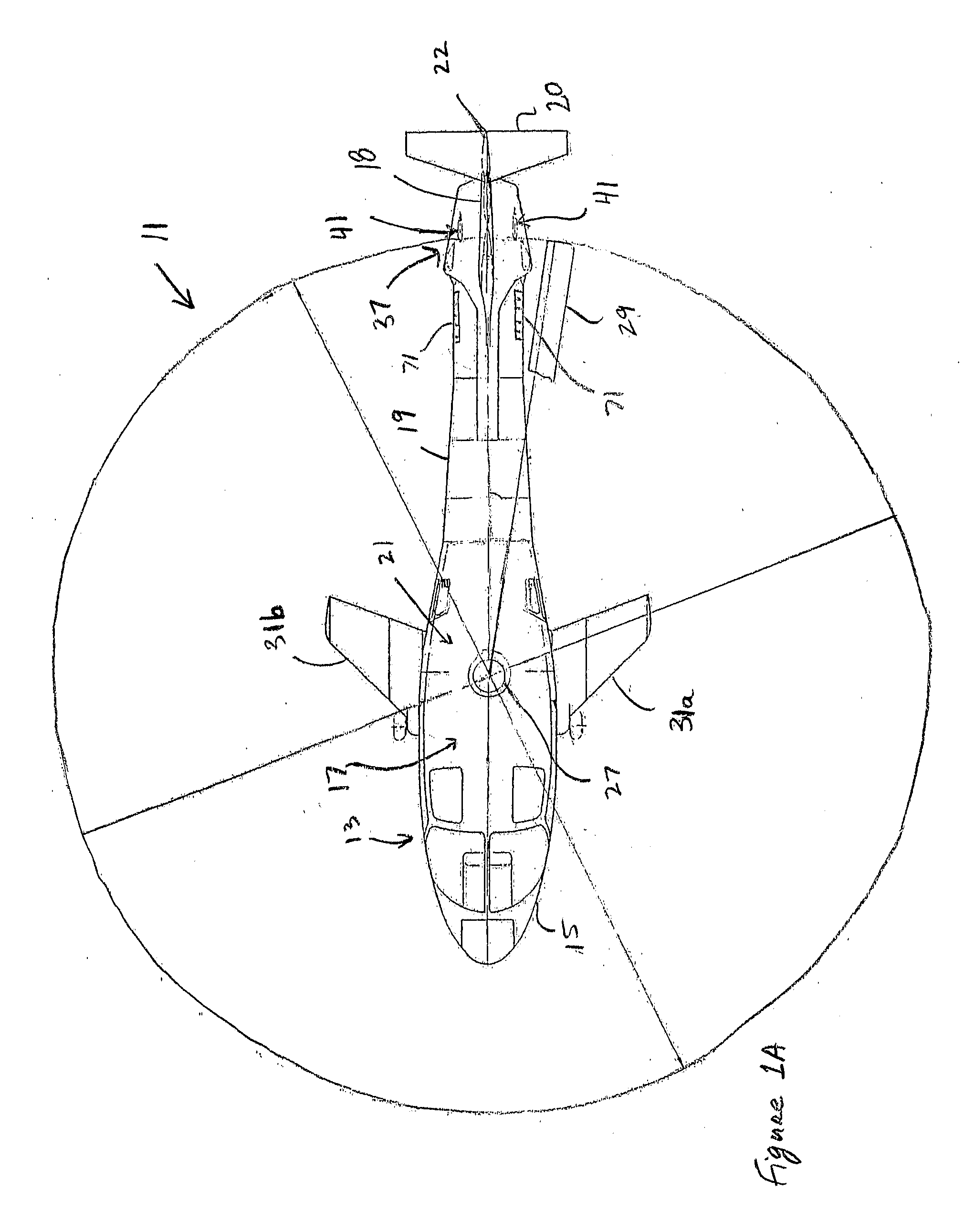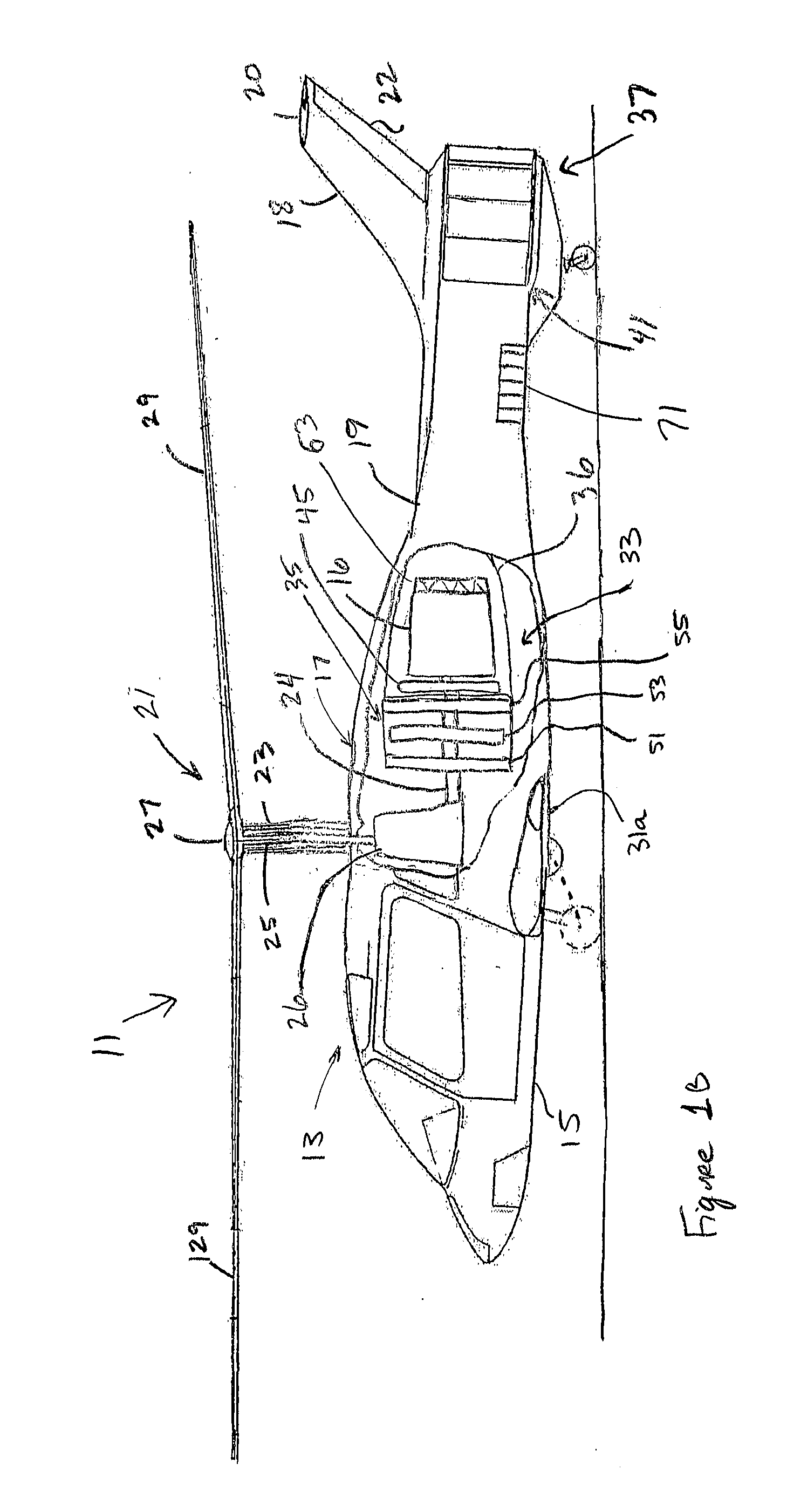Propulsive Anti-Torque System for Rotorcraft
a technology of rotorcraft and torque, applied in the field of rotorcraft, can solve the problems of increasing the power required with increasing speed, reducing the productivity of hammers, and reducing the efficiency of rotorcraft, so as to improve the productivity of rotorcra
- Summary
- Abstract
- Description
- Claims
- Application Information
AI Technical Summary
Benefits of technology
Problems solved by technology
Method used
Image
Examples
Embodiment Construction
[0017] The present invention represents a unique combination of lift compounding and propulsion compounding to create a small rotorcraft that can travel at very high speeds. The lift compounding is provided by a small wing, and the propulsion compounding is provided by a pneumatic propulsive anti-torque system. Although the present invention will be described herein with respect to helicopters, it will be appreciated that the present invention may be utilized on a wide variety of rotorcraft.
[0018] Referring to FIGS. 1A and 1B in the drawings, the preferred embodiment of a helicopter 11 according to the present invention is illustrated. FIG. 1A is top view of helicopter 11, and FIG. 1B is a cut-away side view of helicopter 11. Helicopter 11 includes an airframe 13 having a cabin portion 15, an upper canopy 17, a tail boom 19, a vertical tail fin 18, a horizontal stabilizer 20, and a controllable rudder 22. Helicopter 11 is powered by a primary turboshaft engine 16 carried within tai...
PUM
 Login to View More
Login to View More Abstract
Description
Claims
Application Information
 Login to View More
Login to View More - R&D
- Intellectual Property
- Life Sciences
- Materials
- Tech Scout
- Unparalleled Data Quality
- Higher Quality Content
- 60% Fewer Hallucinations
Browse by: Latest US Patents, China's latest patents, Technical Efficacy Thesaurus, Application Domain, Technology Topic, Popular Technical Reports.
© 2025 PatSnap. All rights reserved.Legal|Privacy policy|Modern Slavery Act Transparency Statement|Sitemap|About US| Contact US: help@patsnap.com



